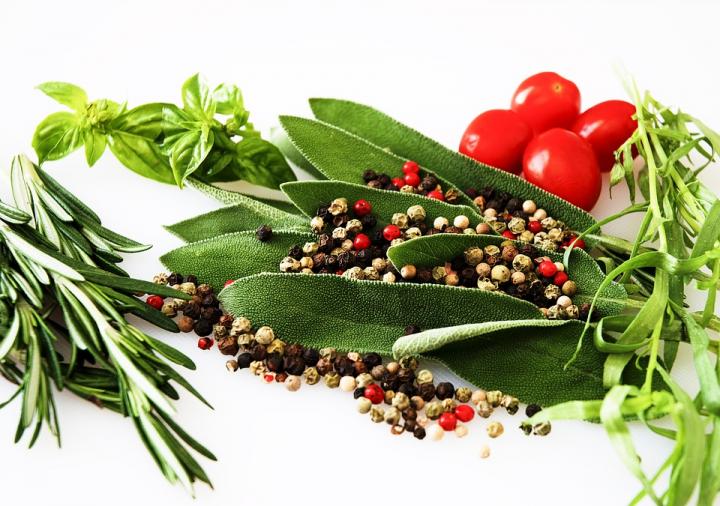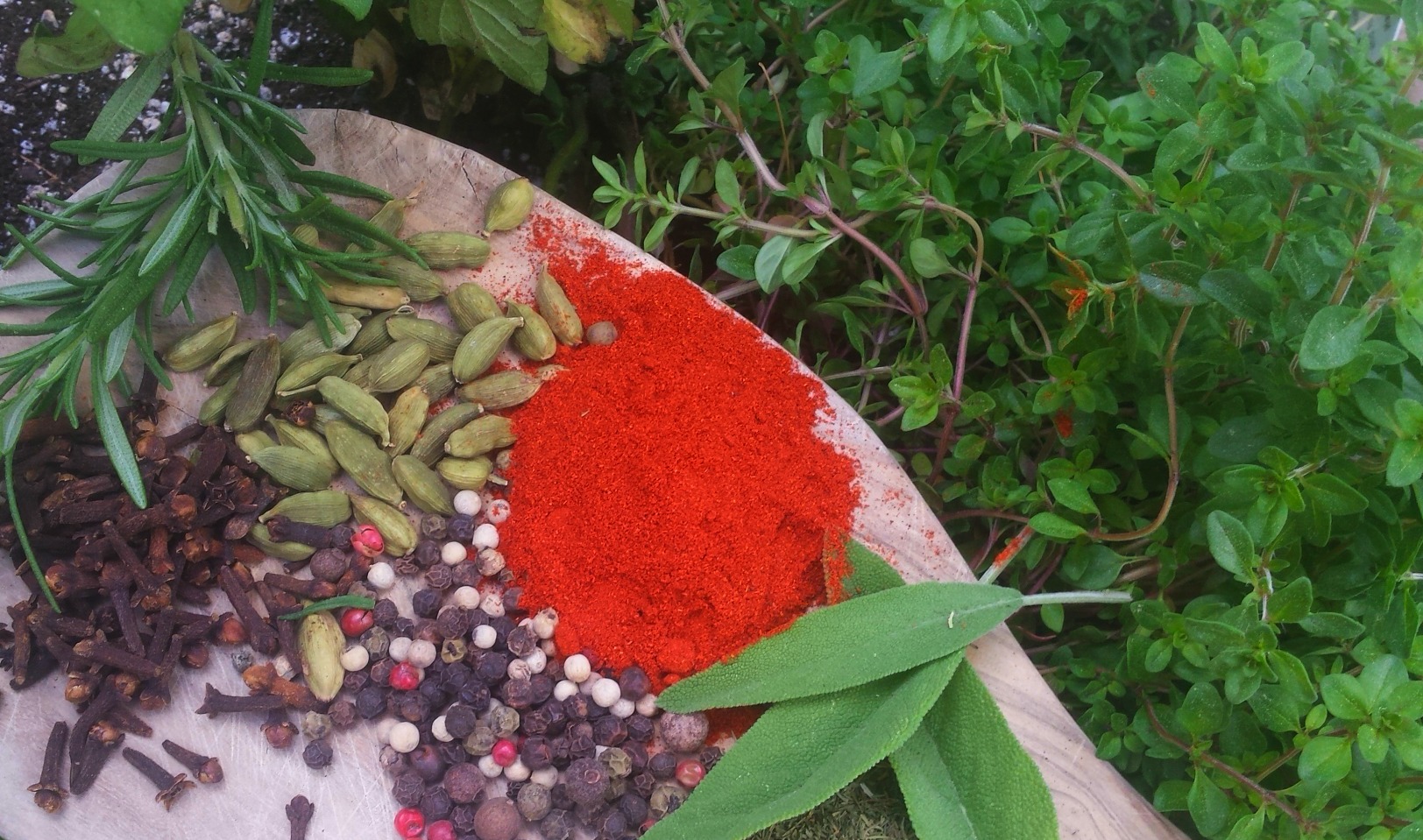






Notice how we keep all our seasonings in a “spice cupboard” and don’t call it an “herbs and spice” cupboard?
Our language has evolved in such a way that we lump together these two biologically different plant parts. While they share many similarities such as their ability to offer flavor, vitality and diversity to our meals, there are many factors that differentiate them.
An herb is the green, leafy part of the plant. A spice can come from the root, stem, seed, fruit, flower or bark of the tree or plant. And a plant can be host to both an herb and spice at the same time like cilantro and coriander. Cilantro is the aromatic leaf of the plant, Coriandrum sativum, while coriander is the seed that comes from that same plant.
Whole spices such as cinnamon sticks, allspice berries and cloves, to name a few, are whole and intact and not broken down or ground. These types of whole spices will keep their flavor and potency much longer than herbs or ground spices. The moment that a spice or herb is ground it’s surface area is increased and exposed to oxygen. Grinding releases the spices volatile oils and what is exposed to the air will begin to break down faster and lose its potency much faster. That is why it is best to buy your spices whole, store correctly away from heat, light and air, and grind right before you use them.

Cooking with herbs and spices requires different methods. Herbs, whether fresh or dried are more delicate in flavor and constitution than spices. First of all, herbs can be used fresh while spices are always used in their dried form. There are occasions when fresh herbs are preferred over dried herbs like in a basil pesto or using fresh parsley in a tabbouleh salad. When using dried herbs it is usually optimal to add them towards the end of cooking to maximize their flavor. Spices on the other hand can withstand longer cooking times and often are enhanced by dry-roasting and being added early in the cooking process.
Of the hundreds of spices that might fill up our spice cupboards, there are only a small handful that can claim they have originated in the Western Hemisphere. Allspice from Jamaica, Vanilla Bean from Mexico and Chile Peppers from America are three of the most popular and most influential in kitchens around the world. The majority of spices we use today grow in more tropical or subtropical regions like the Mediterranean, Southeast Asia and India. Herbs, while also popular throughout the tropical regions can be grown in more temperate and often arid climates and are found in abundance throughout North America, Mexico and Central America.
~ By Melissa Spencer
Melissa Spencer has long had a fascination with plants and doesn’t discriminate between wild, weed or cultivated. She owns Attar Herbs & Spices located in the beautiful Monadnock Region of NH and is celebrating 50 years of service. She actively writes, speaks, and shares ways to infuse herbs and spices into everyday life.
Herbs and Spices really are little bundles of aromatic seeds, barks, berries and leaves. They can enliven the family meal turning the ordinary into the extraordinary and into a fragrant delight of the senses. They can open up a world of exotic cuisines connecting us with faraway cultures and they provide us with amazing health benefits. Follow her blog for endless ways to spice up life for the taste of it, the joy of it, and the health of it.
Copyright © www.100flowers.win Botanic Garden All Rights Reserved